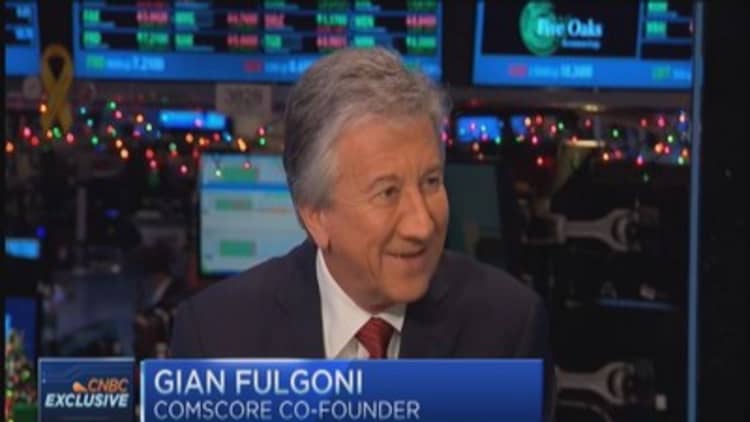Who said flip phones were so 2000?
The humble clamshell handset is making a curious comeback in Japan, a country known for its cutting-edge technology.
Japanese shipments of flip phones rose for the first time in seven years in 2014, up 5.7 percent on year at 10.58 million, while smartphone shipments fell 5.3 percent to 27.70 million, according to data from market research firm MM Research Institute (MMRI).
The flip phone fillup has caught the attention of industry analysts, who pin it on shorter replacement cycles for the phones and a rise in contract renewals.
"This is unusual and interesting. My gut feeling is that it's a function of replacement rates. The replacement cycle for flip phones has been getting shorter to around 12-18 months compared with two to three years for an iPhone or Samsung Galaxy phone," said Marc Einstein, industry principal for the information and communications technology practice at Frost & Sullivan.
Tadayuki Shinozaki, an analyst at MMRI added: "This trend may be a matter of timing as a lot of the demand was fueled by contract renewals."

Unlike in the West, feature phones still have a loyal following in Japan, accounting for around 30-40 percent of mobile phones sold, according to Frost and Sullivan.
Elderly consumers are drawn to the no-frills phones for their simpler features, while younger and middle aged consumers prefer them for their longer battery life and cheaper price. There's also a segment of hardcore gamers who use flip phones because they offer games that are not available on other mobile devices.
Two is better than one
While contract renewals may have made up the bulk of the increased demand for flip phones, there's also a segment of Japanese consumers buying flip phones as a second mobile device.
Take 41-year-old professor Antonio Formacion, for example, who recently purchased a Sharp flip phone to supplement his Samsung Galaxy 5 device.
Having two phones – one for voice and the other for data – works out much cheaper, Formacion said.
Read MoreGlued to your phone? That's OK, so is everyone else
"I'm now using two phones. One flip phone from Softbank that has a monthly bill of 2,000 yen which includes unlimited calls to any phone in Japan. And the second phone a Galaxy S5 for data only for 980 yen a month. Previously I was averaging around 9,000 yen a month on my iPhone 5," he said.
Formacion says having two phones makes him feel more secure: "I know that important calls will reach me even though my smart phone is already dead."
While Japanese mobile manufacturers have made little progress in cracking the smartphone market, they continue to develop new features phones.
Electronics maker Sharp, for instance, will be pushing out a new flip phone in the next few months that will operate on a 4G LTE network, enabling users to access the internet.
Elsewhere in Asia
Rising demand for the flip phone is not limited to Japan.
Seoul-based Tom Kang, research director at Counterpoint Research, says he's seen a modest increase in demand in South Korea – the home of Samsung Electronics and one of the most connected countries in the world.
"We thought flip phones would disappear, but some parents are opting to buy them for their teenage kids instead of smartphones because they are less of a distraction," Kang said.
Like Japan, "there's steady demand from elderly consumers who find it more convenient and cost efficient," he said.
-- Chehui Peh contributed to this article.


